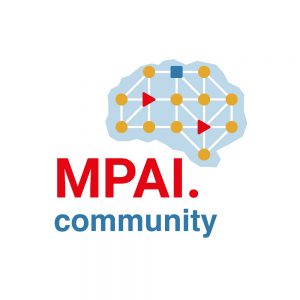ISO is too important to leave it in the hand of people who are catapulted to Geneva from who knows where for who knows what alchemy to serve who knows what purposes.
Of course, the way an organisation elects to hire people is their business. However, the mission of that organisation must be fulfilled. The mission “to develop high quality voluntary International Standards which facilitate international exchange of goods and services, support sustainable and equitable economic growth, promote innovation and protect health, safety and the environment” cannot stop at putting in place a process prescribing how to move a document due to become a standard from one stage to another. I mean, that could have been the end point 73 years ago when ISO was established.
I do not know what is required for economic growth or protection of health, safety and the environment, but is innovation promoted just by managing the process of standards approval? In my opinion standard is synonymous of innovation, or we are talking of rubber stamping.
Of course, innovation has probably as many faces than there are industries, probably more. Therefore the point here is not about ISO looking for and hiring superhumans competent on everything and able to discover the enabling factors of innovation, but it is about hiring people who listens to the weak or strong signals coming from the field of standardisation.
In this article I will talk about how MPEG handled reference software for its standards, an issue that goes to the core of what is a media compression standard.
In 1990 Arian Koster proposed to develop a common reference software for MPEG-1. Internet may have developed on the principle of “Rough Consensus and Running Code”, but the world of video compression was born on what I would call “Rough Consensus and Running Hardware” where each active participant developed their own implementation of a commonly (roughly) agreed specification. Comparing results was not easy. In the COST 211 project satellite 2 Mbit/s satellite links were used to interconnect different hardware implementations. In MPEG-1 (but that was true of MPEG-2 as well) every active participant developed their own code and brought results of their simulations of Core Experiments. By proposing to create common code bases, Arian opened the doors of a new world to MPEG.
Arian’s proposal notwithstanding, there was not a lot of common code for MPEG-1 and MPEG-2, but in the mid 1990s his ideas were fully implemented for the MPEG-4 reference software – audio, video and systems. That was more than 10 years after Richard Stallman had launched the GNU Project. In a completely different setting, but with comparable motivation, MPEG made the decision to develop the reference software collaboratively because better software would be obtained, the scope of MPEG-4 was so large that no company could probably develop it all and a software implementation made available to the industry would accelerate adoption of the standard.
In those years, Mike Smith, the head of ISO’s Information Technology Task Force (ITTF), was of great help. He stated that ISO was only interested in “selling text”, not software, and allowed MPEG to develop what was called the MPEG-4 “copyright disclaimer” that contained the following elements
- The role of developer and contributors
- The status of the software as an implementation of the MPEG standard
- Free licence to use/modify the module in conforming products
- Warning to users that use of the software may infringe patents
- No liability for developers, contributors, companies and ISO/IEC for use/modify the software
- Original developer’s right to use, assign or donate the code to a third party.
For sure the MPEG-4 copyright disclaimer was rather disconnected from the GNU Public Licence (GPL), but it did serve MPEG purposes well. All MPEG reference software was made available on the ISO web site for free download. It is a known fact that many use MPEG reference software as the uncontroversial and unambiguous way to express the intention of the (textual) MPEG standard.
The copyright disclaimer was used for about 15 years, until large software companies in MPEG expressed their discomfort for it. At that time many companies were already using modified reference software in their products. This was allowed by the copyright disclaimer but handling software with different licences in their products was not desirable. MPEG then opted for a modified BSD licence. “Modification” meant adding a preamble to the BSD licence: “The copyright in this software is being made available under the BSD License, included below. This software may be subject to other third party and contributor rights, including patent rights, and no such rights are granted under this license”. MPEG called this the MXM licence because it was developed for and first applied to the MPEG Extensible Middleware standard.
One day, probably some 25 years after Arian’s proposal, the ISO attorney Holger Gehring realised that there was one, actually more issues with the reference software. As MPEG used to meet in Geneva every 9 months because of the video collaboration with ITU-T, the MPEG chairs had several sessions with him and his collaborators until late at night for a couple of MPEG meetings. We discussed that, for MPEG people, the textual version of standard was important, but the software version, at least for some types of standard, was more important and that the two had equal status, in the sense that textual version expressed normative clauses in a human language, while the software version expressed the same normative clauses in a machine language.
After reaching an agreement on this principle, the discussion moved to the licence of the software. I recalled the agreement with Mike Smith and that all MPEG reference software was posted on the ISO web site for free download and advocated the use of the MXM licence. This was agreed and I undertook to convince all MPEG subgroups to adopt it (some were still using the copyright disclaimer). With some difficulty I got the support of all subgroups to the agreement.
I communicated the agreement to the ISO attorney but got no acknowledgement. Later I learned that he had “left” ISO.
We kept our part of the agreement and released all reference software with the MXM licence. A little before I left ISO I learned that several standards with reference software in it had been withheld because the reference software issue had surfaced again, that they were discussing it and that they would inform us of the result…
ISO has to decide if it wants to “promote innovation” or if it wants to be feudal. People in the field have acquired a lot of competence, validated by some of the biggest software companies, that would allow ISO competently to address the issue of software copyright in standards.
Posts in this thread
- MPAI – do we need it?
- New standards making for a new age
- The MPEG to Industry Hall of fame
- This is ISO – An incompetent organisation
- This is ISO – An obtuse organisation
- What to do with a jammed machine?
- Stop here if you want to know about MPEG (†)
- This is ISO – A hypocritical organisation
- The MPEG Hall of fame
- Top-down or bottom-up?
- This is ISO – A chaotic organisation
- A future without MPEG
- This is ISO – A feudal organisation


